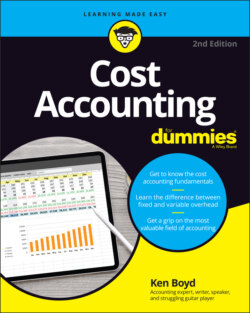Читать книгу Cost Accounting For Dummies - Kenneth W. Boyd - Страница 35
Deciding on direct versus indirect costs
ОглавлениеAs a business owner, you need to analyze all your costs and decide which ones are direct and which ones are indirect. One way to do that is to visualize your product. Look at that pair of gloves one more time. You can certainly picture the materials (cotton, yarn, and leather) used in a pair of gloves. Also, you can visualize a worker cutting the cotton and sewing it together.
That exercise should convince you that material and labor are direct costs. You can imagine those costs “traveling along” with the gloves as they are produced, packaged, and shipped to a customer. Okay, direct costs. Got it.
Working with direct costs in cost planning is preferable because direct costs are known. In the previous example, you defined material and labor costs as direct, because you can attach the costs directly to the product. If the costs are known, your planning is more precise. Actual costs are likely close to your planned amounts. Because indirect costs are based on estimates, your budgeted costs are less precise.
Next, you review your checkbook to find other costs. You find checks for vehicle insurance for a truck. Consider what you just read in the previous section. Insurance costs can’t be traced directly to the gloves, so you need to decide on an activity level to allocate the costs.
The truck’s insurance cost can be allocated based on the number of miles you drive the truck. Assume you compute an insurance allocation of $0.10 per mile. You now need to get the cost allocated to your product.
Instead of allocating the cost to individual pairs of gloves, you allocate costs to each shipment of gloves. When a customer orders gloves, they are packed up and shipped, using the truck. Based on the number of miles driven to a client, you can allocate the truck insurance cost.
Indirect costs can be allocated using many levels and kinds of activity. You’ve seen how costs can be allocated by product and by shipment. As you see later in the book, you can allocate costs by company department or product line. As long as the cost is eventually allocated to a product or service, you can justify many methods of indirect cost allocation.
